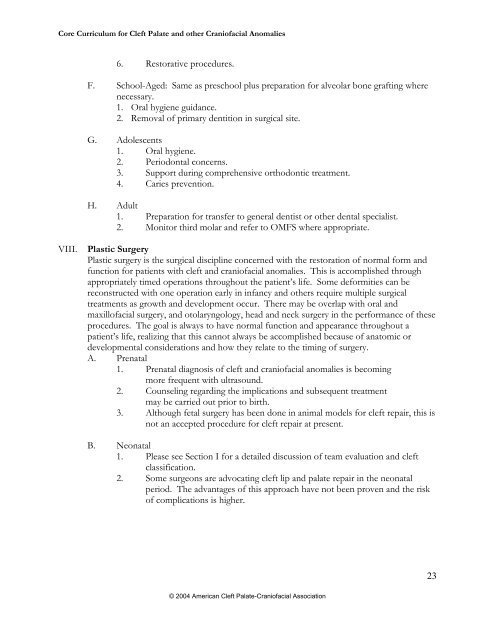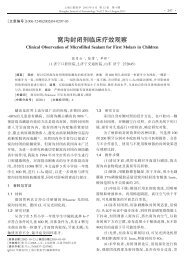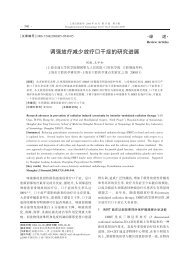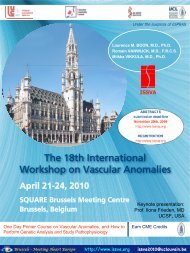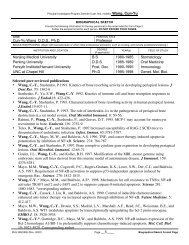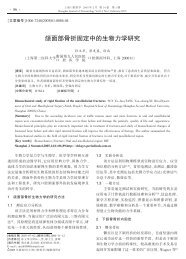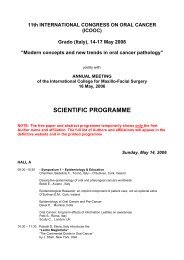core curriculum cleft lip/palate craniofacial anomalies
core curriculum cleft lip/palate craniofacial anomalies
core curriculum cleft lip/palate craniofacial anomalies
Create successful ePaper yourself
Turn your PDF publications into a flip-book with our unique Google optimized e-Paper software.
Core Curriculum for Cleft Palate and other Craniofacial Anomalies<br />
6. Restorative procedures.<br />
F. School-Aged: Same as preschool plus preparation for alveolar bone grafting where<br />
necessary.<br />
1. Oral hygiene guidance.<br />
2. Removal of primary dentition in surgical site.<br />
G. Adolescents<br />
1. Oral hygiene.<br />
2. Periodontal concerns.<br />
3. Support during comprehensive orthodontic treatment.<br />
4. Caries prevention.<br />
H. Adult<br />
1. Preparation for transfer to general dentist or other dental specialist.<br />
2. Monitor third molar and refer to OMFS where appropriate.<br />
VIII.<br />
Plastic Surgery<br />
Plastic surgery is the surgical discipline concerned with the restoration of normal form and<br />
function for patients with <strong>cleft</strong> and <strong>craniofacial</strong> <strong>anomalies</strong>. This is accomplished through<br />
appropriately timed operations throughout the patient’s life. Some deformities can be<br />
reconstructed with one operation early in infancy and others require multiple surgical<br />
treatments as growth and development occur. There may be overlap with oral and<br />
maxillofacial surgery, and otolaryngology, head and neck surgery in the performance of these<br />
procedures. The goal is always to have normal function and appearance throughout a<br />
patient’s life, realizing that this cannot always be accomplished because of anatomic or<br />
developmental considerations and how they relate to the timing of surgery.<br />
A. Prenatal<br />
1. Prenatal diagnosis of <strong>cleft</strong> and <strong>craniofacial</strong> <strong>anomalies</strong> is becoming<br />
more frequent with ultrasound.<br />
2. Counseling regarding the implications and subsequent treatment<br />
may be carried out prior to birth.<br />
3. Although fetal surgery has been done in animal models for <strong>cleft</strong> repair, this is<br />
not an accepted procedure for <strong>cleft</strong> repair at present.<br />
B. Neonatal<br />
1. Please see Section I for a detailed discussion of team evaluation and <strong>cleft</strong><br />
classification.<br />
2. Some surgeons are advocating <strong>cleft</strong> <strong>lip</strong> and <strong>palate</strong> repair in the neonatal<br />
period. The advantages of this approach have not been proven and the risk<br />
of complications is higher.<br />
23<br />
© 2004 American Cleft Palate-Craniofacial Association


